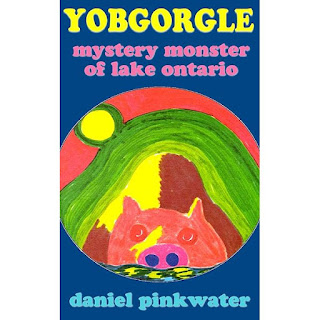Every writer is unique, of course. But some are
quirkier than others, with idiosyncrasies closer to the surface. They're the
obviously unique ones.
Even in that company, Rudy Rucker stands out: the creator and pretty much sole acolyte of Transrealist writing, a mode of science fiction in which the point is to "write like yourself, only more so" and incorporate as many elements from your real life into fiction as possible. His work is weirdly specific in at least two distinctive ways. First, a loose-limbed Northern California sense of freedom and possibility, equally influenced by surfing and slackerdom. Second, a deep fascination with math, topology, and computer science - Rucker's college-professor day-job for decades - which means that some of his novels have actual drawings in them to illustrate ideas and the structures of fictional worlds.
On top of that, Rucker delights in the goofy and the weird - one early novel was The Sex Sphere, which is about, well, "a giant ass in Hilbert space." That's the slacker/surfer vibe again, I suppose, but I need to emphasize it, because Rucker is consistently weirder and wilder than you imagine, no matter who "you" are.
His novels are usually fun and amusing - not exactly light, since they often feature potential apocalypses, but definitely askew from normal life and fiction, and not to be taken purely with a straight face (or an unaltered brain). And I see that I've never written about his novels here, despite having read a lot of his stuff and acquiring several projects back in my SFBC days. (I did cover his autobiography, Nested Scrolls, here about a decade ago.)
So today I'm trying to get my arms around Million Mile Road Trip, Rucker's most recent novel, published in 2019. It is deeply Ruckerian, both mathy and slackery, and the central plot is about fighting off an invasion of evil flying saucers from a parallel world - so it's full of elements and ideas that resonate and follow from his earlier books.
Zoe Snapp and Villy Van Antwerpen are graduating high-school seniors in Los Perros, California - sort of going out, tentatively thinking about their futures, a bit overwhelmed by all the possibilities of life. And then two skinny aliens, Yampa and Pinchley, show up, declare that these two are needed to save the world, and offer to modify Villy's giant old station wagon to make a massive road trip across a parallel world. And why not? Villy's kid brother Scud tags along at the last minute, and the five are off.
They travel through a dimensional bridge - an "unny tunnel," in Rucker's typically goofy language - to Mappyworld, a parallel universe where various round planets from our universe are mapped onto flat valleys in a potentially infinite landscape of hexagonal mountains. (Yes, some older readers may notice an unexpected Jack Chalker echo at this detail.) So every few thousand miles, there's a massive mountain range separating another "world," with another batch of weird aliens living there.
There's a lot of incidents, and, as the title implies, their destination world is about two hundred valleys away, making it, yes, a million-mile road trip. (And that's just in one direction!) Along the way, they learn that flying saucers are living beings, and are divided into the good dark-eyed saucers (Scud makes out with one of them) and the evil red-eyed saucers (who try to kill them, and are led by the gigantic evil Groon, bent on conquest of our Earth, of course).
Our heroes learn details of Mappyworld, meet various bizarre creatures, and gather strange powers and devices, such as the pearls that power saucers and their own transforming musical instruments. (Rucker also has the Boomer tropism for rock 'n roll, or at least music, as a liberating mechanism in the world.) There is a big battle in various 4D environments and the grounds of Los Perros High at the climax. And the world, of course, is saved.
Rucker's language is always goofier than I expect - unny tunnels and surfer slang - and this is one of his less-structured, "and then this happened" stories. It's characteristically Ruckerian, but maybe not one of his very best novels, or perhaps I mean not the best choice for a new reader. On the other hand, it's pure Rucker, contemporary in a way that a lot of his books aren't anymore, and full of interesting moments.
I dunno, man. You'll have to decide for yourself, y'know? Smoke 'em if you got 'em.










